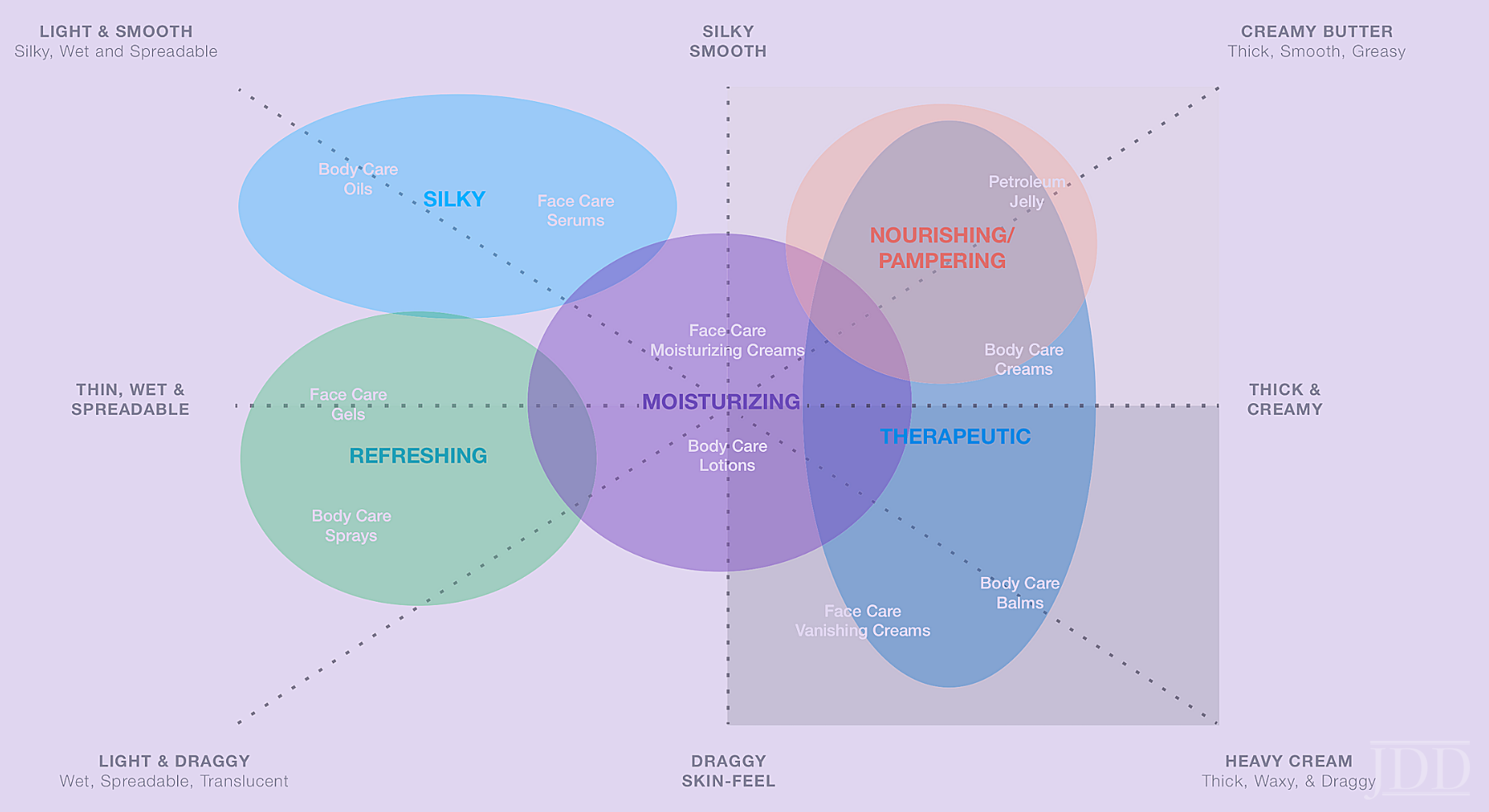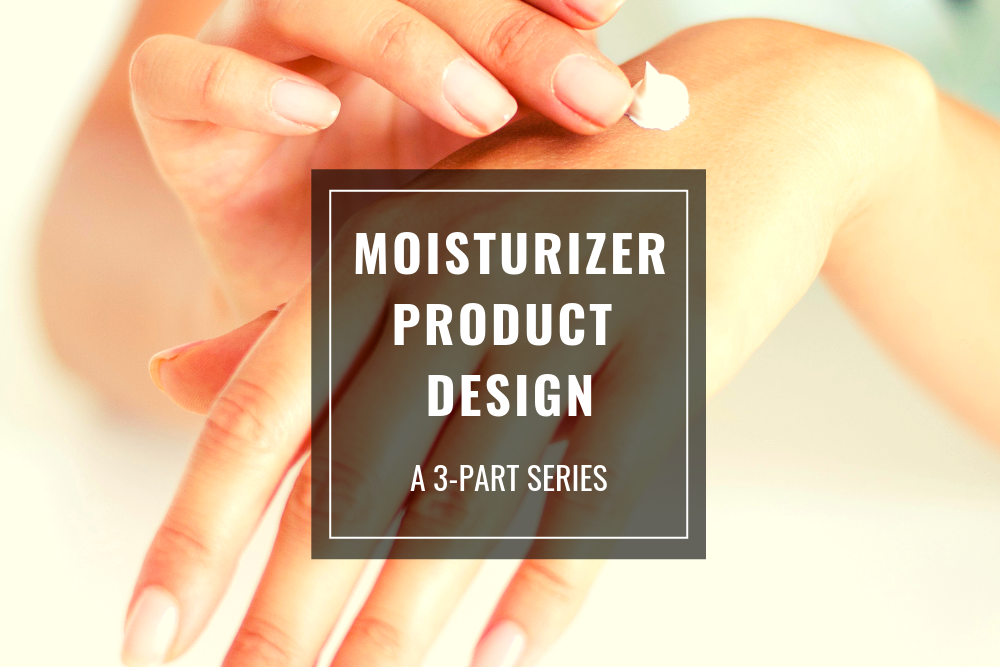In part 2 of this 3-part series, we discussed the basics of moisturizer product design, including the key components that differentiate moisturizers from other product formats, and the benefits and uses of common ingredients. In part 3, the last delivery in our series, we discuss product sensories and consumer experience across moisturizing products.
Product Sensories
Today, consumer experiences vary widely across moisturizing products. Also, most possible combinations of ingredients are available in almost any product format. In Figure 12, we have mapped different products and formats by their typical skin feel sensories as well as by the perceived consumer benefits associated with the different sensory domains.

Products in the center of this map are designed for normal dry skin and daily use. They are typically easy to apply, absorb quickly, and feel moisturizing. Formulations on the right side of the map are thicker, creamier products and are associated with consumer benefits such nourishing and pampering. Thicker, creamier aesthetics also suggest to the consumer that the products will provide more therapeutic benefits such as longer-lasting moisturization and efficacy for drier skin. These formulas generally use higher levels of solid based emulsifiers and polymers to achieve their thicker texture. High emollient creams fall here with thick, smooth textures and greasier after-feel. Because these aesthetics strongly suggest superior efficacy (whether clinically true or not), products for people with very dry skin and its associated symptoms tend to fall in this space in the sensory map.
Compositions spanning the left side are typically thinner, wetter, and spread more easily. These are often polymer-structured liquids with a lower level of liquid-based emulsifiers. The lower left quadrant is associated with refreshing and hydrating benefits and includes gel and spray formats. These are especially suited for hot, humid climates. On the other hand, most face care products tend to lie in the upper quadrants because they often contain silicones and silicone elastomers to impart a silky skin feel.
It is important to note that it is entirely possible to create any possible experience on this map by simply altering the type of emulsifiers, polymers, sensory modifiers, and emollients. Moisturizing ingredients and actives play a role in sensory, but not as overwhelmingly as is often believed.
Conclusion
This 3-part series was intended to describe the art and science of moisturizer product design and to start a conversation about long-standing beliefs about cosmetic products, specifically that some pre-conceived relationships between experience and efficacy and cost may not always be accurate. For example, it is erroneously assumed that creams are more efficacious than lotions. Clinical studies performed by Unilever and others using many creams and lotions have disproven this myth. In fact, cosmetic moisturizers covering a wide variety of formats can give the consumer their personally desired combination of efficacy and hedonics. Price is not often a guarantor of product efficacy and the best strategy is to examine the INCI, be armed with information, and seek expert advice.
Did you miss part 1 and 2 of this series? Check them out here and here.
Source:
Lee, Christine, et al. “Principles of Moisturizer Product Design.” Journal of drugs in dermatology: JDD 18.1s (2019): s89-95.
Content and images used with permission from the Journal of Drugs in Dermatology.
Adapted from original article for length and style.
Did you enjoy this article? Find more on Derm Topics here.

